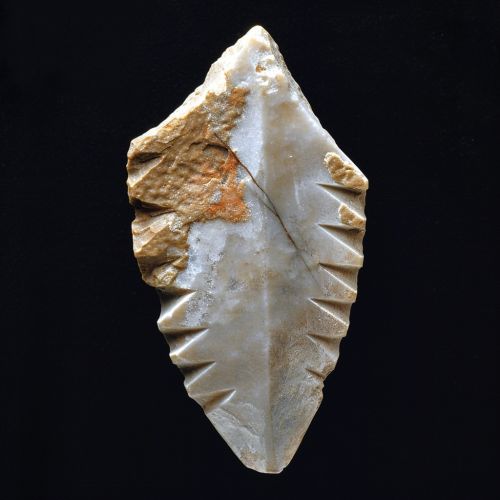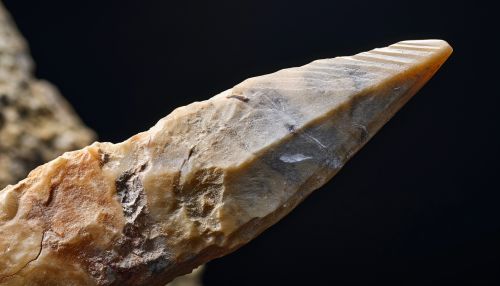Clovis culture
Introduction
The Clovis culture represents a prehistoric Paleoamerican culture, named for distinct stone tools found in close association with Pleistocene fauna at Blackwater Locality No. 1 near Clovis, New Mexico, in the 1920s and 1930s. The Clovis culture appears around 11,500–11,000 uncalibrated radiocarbon years before present at the end of the last glacial period and is characterized by the manufacture of "Clovis points" and distinctive bone and ivory tools.


Archaeological Discovery
The Clovis culture was first identified in the 1920s and 1930s from artifacts found near Clovis, New Mexico. The distinctive Clovis point, a fluted projectile point, is found overlaid with mammoth bones in the Blackwater draw site, which remains the type site for the Clovis culture. The culture is identified by the distinctive Clovis point, a flaked flint spear-point with an elongated, thin, groove or flute, known as a flute, along part of its base.
Clovis Points
Clovis points are the characteristically-fluted projectile points associated with the New World Clovis culture. They are present in dense concentrations across much of North America; in South America, they are largely restricted to the north of that continent. Clovis points date to the Early Paleoindian period roughly 13,500 to 12,800 calendar years ago. Clovis fluted points are named after the city of Clovis, New Mexico, where examples were first found in 1929 by Ridgely Whiteman.
Clovis First Theory
The "Clovis first theory" refers to the 1950s hypothesis that the Clovis culture represents the earliest human presence in the Americas, with no human activity predating Clovis tools. The theory is based on the discovery of Clovis points in situ, directly associated with mammoth and mastodon remains. The theory has been largely discarded due to the discovery of several sites predating Clovis, such as Monte Verde and Meadowcroft Rockshelter.
Clovis Comet Hypothesis
The Clovis comet hypothesis, also known as the Younger Dryas impact hypothesis, posits that a large air burst or earth impact of a comet or comets from outer space initiated the Younger Dryas cold period about 12,900 BP calibrated (10,900 14C uncalibrated) years ago. The hypothesis suggests this impact contributed to the extinction of most of the megafauna in North America and the demise of the Clovis culture.
Extinction of Megafauna
The end of the Clovis culture coincides with the extinction of more than 35 genera of North American Pleistocene megafauna, including mammoths, mastodons, saber-toothed cats, giant ground sloths, and short-faced bears. The extinction event is often referred to as the Quaternary extinction event. The debate regarding the cause of this extinction, whether due to hunting by humans of the Clovis culture or due to climate change, is known as the Pleistocene Overkill Hypothesis.
